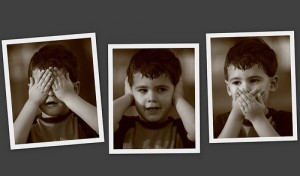ETEC 540
Revisiting Commentary # 1 and Reflections
A Symbiotic Relationship: The Written and Spoken Word
Writing, the new technology of Plato’s era, was being promoted as the elixir for improving memory. It was seen as the “specific tool for memory and wit.” However, Plato argued contrary to this and suggested that it would foster “forgetfulness in learners’ souls.” Plato further elaborated that learners would have a show of wisdom without reality. Ironically, Plato had his ideas and teachings written down and this is why we have access to them today. Walter Ong (1982, 2001) suggests that it is impossible for pre-literate cultures to operate as literate ones do. According to Ong writing has led to the expansion of literacy and a restructuring of human consciousness. He does not see this as negative as he states, “[t]echnology, properly interiorized, does not degrade human life but on the contrary enhances it” (Ong, p. 82). He also suggests that to understand writing “means to understand it in relation to its past, to orality, the fact that it is a technology must be honestly faced” ( Ong, p.82). Neil Postman (1992), on the other hand, seems less accommodating in his pronouncement that [n]ew technology alters the structure of our interests: the things we think about. They alter the characters of our symbols; the things we think with. And they alter the nature of community: the arena in which thoughts develop” (Postman, p.120). Regardless of the criticism leveled against new technology, my experience throughout this course has taught me that their emergence is inevitable.
The past few months have been a bit challenging due to my limited knowledge of the technological world which has gone through much deconstruction! Hypertext, digital literacy, multiliteracy, social technologies and Web 2.0 were unfamiliar terms. But I thought I knew about ‘orality’ and ‘writing.’ It turns out that I had to refashion my thinking about these. I never viewed writing as technology. Ong transported me to imagine a world without literacy which ended in a misreading of Daniel Chandler’s ‘Phonocentrism.’ This led to much rethinking and reordering. As a result of this experience and my research project on silent reading, I have come to recognize writing as a technology which has become deeply interiorized by many including myself. I now believe that orality is more natural and has to come first as children develop literacy skills. As children become exposed to print they become aware of the symbiotic relationship between writing and speech. Writing has become so much a part of our lives that we see ourselves in and through our media. Our innocent children observe our behavior and develop emergent literacy according to studies done by Marie Clay (1992).
As we traversed this course we discovered how orality and writing was represented on papyrus scrolls, codex and the printing press and then eventually moved on to hypertext and word processing technologies. My reading of The Writing Space: Computers, Hypertext and the Remediation of Printby David Jay Bolter allowed me to understand the development of a new kind of literacy that has emerged as humans moved from oral to visual literacy and back. Digital literacy and emergent multiliteracies have now become terms which have to be seriously considered by educators. The journey for suggests a combination past and present technologies merging. While I am somewhat concerned about the sustainability of the dependence on technology, I remain aware through the work of the New London Group, Dobson and Willinsky’s article and Bryan Alexander’s “Web 2.O and Emergent Multiliteracies,” that digital literacy is the way forward whether we want to admit it or not. The important thing is that we recognize that our students are going to need critical skills in order to make sense of everything that is presented on the Internet and train them well. We cannot be satisfied with just knowing the basics if we want a future generation that is wise as are result of having so much information at their fingertips.
As I sang a duet with a student recently, I realized that we can’t turn back the clock and wish away a return to the classical training I went through but we could merge the old and the new to create a new delightful symphony. This is how I am beginning to view the era of multiliteracies. The appeal to the senses that the ripmixfeed offers will certainly lessen the generation gap which exists between many teachers and students. As the curtain falls on ETEC 540 I know its spirit will live on in our pedagogy. We have certainly proved the critics wrong. Even though I did not participate as much as I would have liked, I felt part of the community of learners. Classmates were more helpful than when I was in a physical setting. One of things that I thought was strange too is that I felt compelled to produce quality work for others to see, due to motivation from my peers’ posts. There were times to that I felt I couldn’t measure up to their standards. I remain very positive about this course as it fulfilled its mandate to explore the changing spaces of reading and writing and I certainly had more than enough spaces to read and write.
References
Alexander, B. (2006). Web 2.0: A new wave of innovation for teaching and learning? EDUCAUSE Review, 41(2), 32-44. Retrieved from http://net.educause.edu/ir/library/pdf/ERM0621.pdf.
Alexander, B. (2008). Web 2.0 and emergent multiliteracies. Theory into Practice, 47(2), 150-160. doi: 10.1080/00405840801992371
Bolter, D. J. (2001). Writing Space Computers, Hypertext, and the Remediation of Print.New Jersey: Lawrence Erlbalm Associates.
Ong, W. (1982, 2002). Orality and Literacy.London and New York: Routledge.

